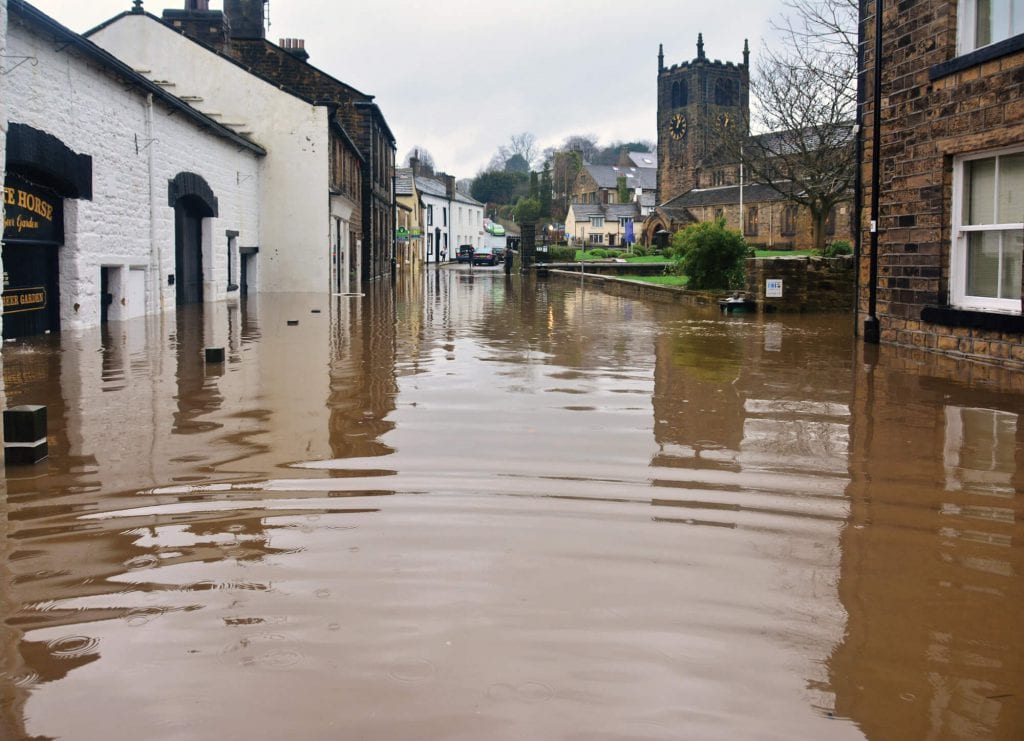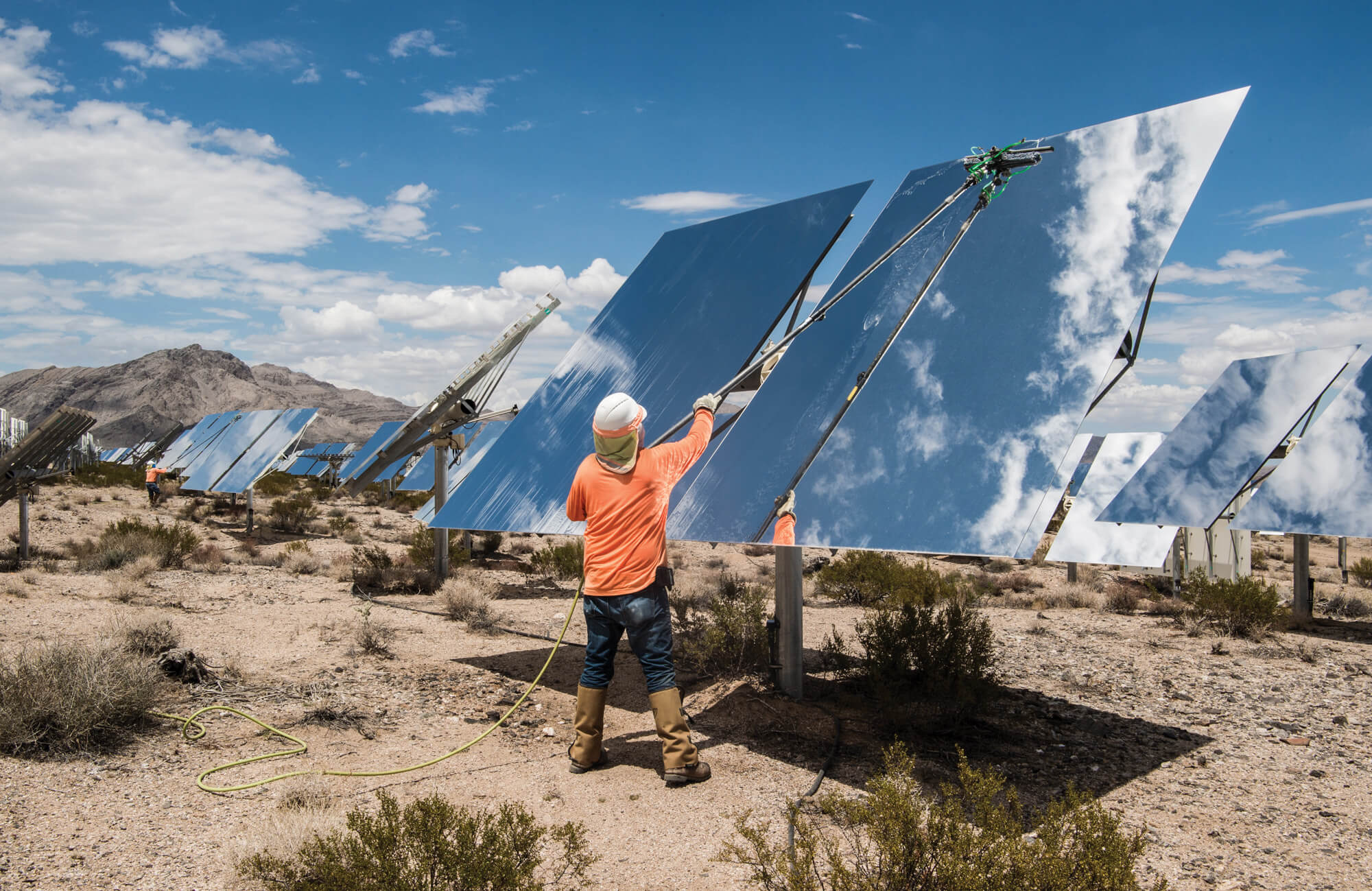Climate Change: Catastrophe or Opportunity?
We have all heard of climate change, but we are not really aware of the repercussions. What does it truly mean and what can we do to mitigate and adapt to its effects? Adaptation of our energy system is essential and provides plenty of growth possibilities for society, economy and environment.
The Earth is at the tipping point – human activity is changing the planet more than all other natural forces combined. Our legacy will be human-induced climate change. Many people talk about the current geological epoch as the “Anthropocene Era” in which humans are the primary cause of permanent planetary change. I have read a lot about climate change, but it was when I was hiking up the Franz-Josef glacier, New Zealand, that I commenced to understand its true impact. Instead of walking on glacial ice – as it used to be, we were climbing up grey rocks next to a river of melting water flowing down. Reaching the last bit of this once impressive glacier after a couple of hours, the questions arose: “Am I truly aware of the impact of climate change and are we doing enough to limit the irreversible and seemingly irrevocable consequences?”

The reason for the rising temperature on Earth is the thickened atmosphere caused by carbon emissions due largely from burning fossil fuels. “The energy trapped by global warming pollution is now equivalent to 400,000 Hiroshima atomic bombs per day 365 days per year”, says James Hansen, former Director of NASA Goddard Institute for Space Studies. The effects of the changing temperature are visible everywhere across the world and appear differently from region to region, ranging from air pollution to extreme temperatures, to heat waves and natural disasters that affect society, economy and the environment. Air pollution alone kills some 7 million people per year; in Poland, it causes the premature death of 50,000 people every year, according to the World Health Organization. Heat waves occur across the globe leading to drought, water and food scarcity in the heat belt of the planet. “In the future, the climate in large parts of Middle East and North Africa could […] render some regions uninhabitable, which will surely contribute to the pressure to migrate”, says Jos Lelieveld from the Max Planck Institute for Chemistry. Looking at the economy, it is no longer profitable to stick to the old system. In 2017, overall losses from world-wide natural catastrophes totaled $330 billion dollars, up from $184 billion in 2016.


Looking at Europe, climate change leaves its marks as well. Extreme weather is significantly more frequent, including heat waves, higher river floods and forest fires in the continental region. For example, May 2018 was the hottest on record in Sweden and United Kingdom. Extreme heat leads to droughts, competition for water, more energy needs and heat casualties. Mountainous areas have to deal with the impact of rising temperatures affecting the environment and economy. For instance, there is a higher risk of forest pests and species extinction; and less snow and melting glaciers leads to a decrease of ski tourism. The Bavarian State of Ministry for the Environment flags that most of the Bavarian glaciers will likely disappear within the next 20-30 years.


Climate change triggering growth
As dire the situation, as thrilling are the solutions. In fact, climate change and limited natural resources are a change agent to move away from an outdated economy and energy system like the linear economy and non-renewable energy supply. Transforming a linear to a circular economy and a non-renewable to renewable energy scheme offers tremendous economic and social growth opportunities in greater harmony with the environment.
Wind could supply 40 times all the electricity used by our global economy.
Renewable energy (particularly wind and solar) has shown exponential growth. What was once a niche technology is now firmly in the mainstream and renewables will capture 2/3 of global investment in power plants by 2040 as they are for many countries the least cost-energy generation source according to the International Energy Agency World Energy Outlook 2017.The cost of onshore wind turbines has fallen dramatically in the last decades. Meanwhile, wind power is the cheapest energy to produce in Germany and the United Kingdom even without subsidies. The prices can even go below zero, meaning consumers are paid to use electricity because of surplus supply of energy. Germany experienced negative electricity prices more than 100 times in 2017. Furthermore, renewable electricity supply now meets more countries’ needs for energy – this was the case in Germany, Portugal and Denmark in 2018. Wind could supply 40 times of all the electricity used by our global economy.


Key to a successful energy transition is storage that is growing exponentially as well. According to Bloomberg New Energy Finance, the global energy storage market is projected to double six times between 2016 and 2030, rising to a total of 125 gigawatts/305 gigawatt-hours. This is similar to the remarkable expansion that the solar industry went through from 2000 to 2015, in which the share of photovoltaics as a percentage of total generation doubled seven times. The combination of batteries, solar, other renewables and storage systems is going to cause a dramatic transformation in the world’s energy markets – moving from a centralized to a decentralized system that empowers consumers.
The successful implementation of clean energy around the globe requires climate action at policy, business and consumer levels, which means a parallel bottom-up and top-down approach. At the UNFCCC Climate Conference COP24 in December 2018, nearly 200 governments agreed on rules to put the climate agreement into action, a strong push towards decarbonization not achieved to that point. China and India are both on track to overachieve their Paris Agreement commitments. China and India are projected to reduce global carbon emissions by roughly 2-3 billion tons by 2030 due largely to significant reduction of their coal use in both countries – something that nobody could have imagined 5 years ago. Yet, observations show they are now on the track to overcoming this challenge. The European Union agreed to increase their binding renewable energy target to 32% by 2030, up from the previous goal of 27%, this agreement will be revisited in 2023.

Towards the new business as usual
Political support combined with available technologies and consumer demand opens plenty of economic opportunities. Over 120 of the world’s leading businesses commit to 100% renewable electricity used across their operations and join RE100 – a global initiative uniting the world’s largest companies such as Google and Coca-Cola. Car companies like BMW, Toyota, General Motors or Mercedes invest in electric vehicles in order to stay competitive – Volvo went one step further and announced that new models will be only electric or hybrid as of 2019. These developments show that if a company wants to stay competitive it needs to integrate clean technologies in their business model. Globally, more than 10 million people now work directly or indirectly in the renewable energy sector, with Europe counting more than 1 million people, according to IRENA.

The reality is that our climate is changing at a faster pace than we can see with tremendous impacts on society, economy and environment. To avoid the damage of further catastrophes such as shifting societies and migration caused by natural forces, it is essential to switch to a more renewable energies and more circular economy business models. This transformation provides growth opportunities on socio-economic and environmental levels – people have more jobs, businesses stay competitive and nature stays in balance – which again is the condition for healthy societies and economies. Let’s take this tipping point as a chance and choose socio-economic growth attuned to nature.
Climate Reality Project:
The Climate Reality Project is a non-profit organization focusing on education, advocacy and communication related to climate change. The Climate Reality Project came into being in July 2011 as the consolidation of two environmental groups – the Alliance for Climate Protection and the Climate Project – both of which were founded by Al Gore. Among its activities, the Climate Reality Project hosts an annual event called 24 Hours of Reality, the network Climate Reality Leadership Corps of 10,000+ Climate Reality leaders worldwide and, in 2013, launched Reality Drop, a climate change news aggregator and social media tool.